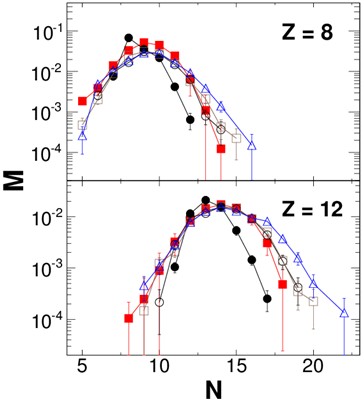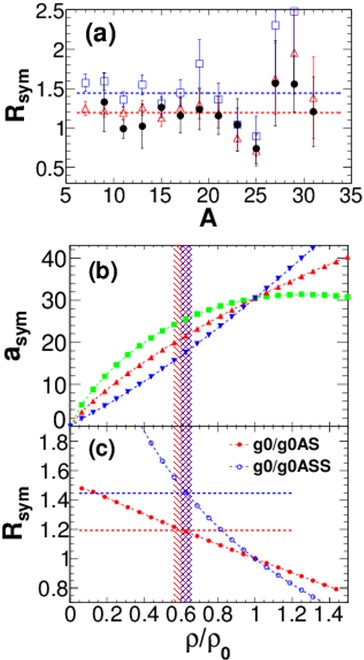Researchers at Institute of Modern Physics, Chinese Academy Sciences (IMP) and Cyclotron Institute, Texas A&M University cooperated and proposed a novel determination of density, temperature, and symmetry energy for nuclear multifragmentation through primary fragment-yield reconstruction in a self-consistent manner.
In violent heavy-ion collisions in the intermediate energy regime intermediate mass fragments are copiously produced through a multifragmentation process. Studies of nuclear multifragmentation provide important information for the properties of the hot nuclear matter equation of state.
In the study, a kinematical focusing method was employed to reconstruct the primary hot fragment-yield distributions for multifragmentation events observed in the reaction system 64Zn + 112Sn at 40 MeV/nucleon. The reconstructed yield distributions were in good agreement with the primary isotope distributions of AMD simulations. The experimentally extracted values of the symmetry energy coefficient relative to the temperature, asym/T , were compared with those of the AMD simulations with different density dependence of the symmetry energy term. By comparison of the experimental values of asym/T with those of calculations, the density of the source at fragment formation was determined to be ρ/ρ0 = (0.63 ± 0.03). Using this density, the symmetry energy coefficient and the temperature were determined in a self-consistent manner as asym = (24.7 ± 1.9) MeV and T = (4.9 ± 0.2) MeV.
The results were published in Phys. Rev. C 89, 021601(R) (2014)

Fig.1 Typical isotopic multiplicity distributions of experimental cold (solid circles), reconstructed primary (solid squares) as well as AMD primary fragments with g0 (open circles), g0AS (open squares) and g0ASS (open triangles) as a function of fragments neutron number N for a given charge Z, which is indicated in the figure (Image by IMP).

Fig.2 (a) Ratios of the calculated asym/T values for g0/g0ASS (open squares), g0/g0AS (open triangles), and g0/the reconstructed experimental yield (dots). Dotted lines are the average values for the AMD simulations. (b) Symmetry energy coefficient vs density for g0 (squares), g0AS (upward triangles), and g0ASS (downward triangles) used in the AMD simulations. The shaded vertical area indicates the fragment formation density extracted from the ratio of the symmetry energy coefficient. (c) Ratio of the symmetry energy coefficient in (b) between g0/g0AS and g0/g0ASS as a function of the density. The horizontal dotted lines indicate the ratio values extracted from the asym/T values in (a) (Image by IMP).

